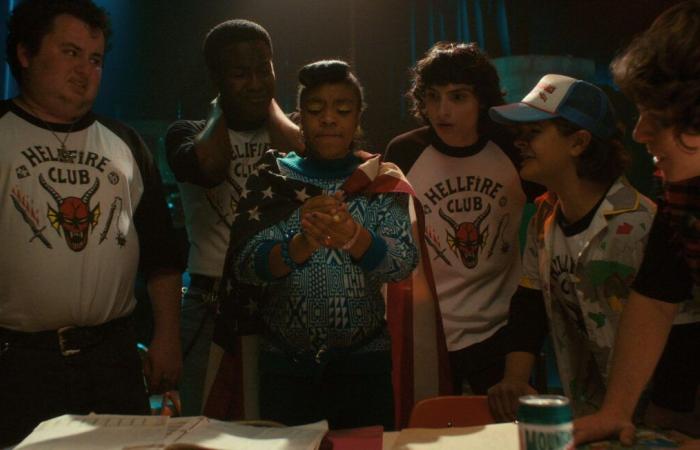What do a fifty-something who is getting back to health have in common? Dungeons & Dragons with the new edition of the game, a forty-year-old who buys Nike Air Max Dn, and a thirty-year-old who goes to see Gladiator 2 while listening to the new Linkin Park album? These people are in “now-stalgia”. They consume culture, fashion, leisure, with references from their childhood and adolescence, with a touch of nostalgia, but without going to garage sales either.
Arnaud Baudry d’Asson imagined a festival to celebrate this trend for which he also found the name. The Iconic Iconic 80, 90, 00’s Festival, at Carreau du Temple, in Paris, was designed to allow visitors to rediscover the pop culture of these cult decades, through exhibitions and events. “We do not have a backward-looking vision. The idea of rediscovering what we loved from those years but in a slightly different way. »
Roller skates and cracking whip
Wandering through the festival allows you to immerse yourself in a host of cult references, a sort of Back to the future (besides the DeLorean is there…) where the past would be cooler than the future. Between reconstructed period teenage rooms, arcade machines, ring roller skates or giant blind test, there is enough to make your memory work, real or fantasized for that matter.
“What’s great about nostalgia is the memories it creates,” says Yoann, who came to the festival with his 13- and 8-year-old sons. I really feel like I lived through the heyday of Indiana Jones when the truth is that I saw the films as an adult. But it remains a virtual marker of my childhood because I had a whip, a toy version, and they called me Indiana Jones. It’s the same with the Star Wars films, it’s my generation and today I love it whereas in reality, as a child, I didn’t really like it…”
An ideal childhood
The other crucial element of “now-stalgia” is, as with the vintage pop business, the possibility of transmission. Like Yoann, Sébastien, a forty-year-old amazed by the images of Super Mario, came with his children: “With the music, cartoons and games of my time, I tell my own children a kind of ideal childhood. It’s a bit of a lie but it allows a link between us, on culture and leisure, that I didn’t have with my parents. »
At a time when pop culture is the subject of academic research and even entering museums, celebrating the 1980s and 1990s is valued. Especially since many sagas or works from those years resurfaced in the 1920s. This is the case of Star Wars, Scream or Jurassic Park. Gladiator has a sequel more than 20 years after its creation. Sonic, hero of a video game from the 1990s, has his films. And in fashion, recycling is also permanent.
Zidane or Platini
“The virtue of this trend, which we want to use with this festival, is the possibility of bringing people and generations together,” says Arnaud Baudry d’Asson. This is why we took three decades. We wanted to do something that doesn’t exist. Everywhere we see vertical exhibitions over a decade. We wanted there to be bridges, exchanges, small battles too. These friendly debates with a lot of bad faith, to defend HIS decade. For example by wondering if Zidane is better than Platini. If Beyoncé is more iconic than Madonna. If the Super Nes was more incredible than the PS2…”
Our Pop Culture file
In this little game of strongest nostalgia, the 2000 generation is doing well.
« “They are even more nostalgic than people over 30,” noted Arnaud Baudry d’Asson. There have been studies on this and in preparing the exhibition we have confirmation of this, because in our teams there are people aged 24 to 29. This generation is the one that is most quickly nostalgic for its youth. They have a way of talking about the cartoons and series of their time with love and regret. They do not regret an era but a moment in their lives when they had less worries. This is a generation that engages less quickly in professional life. Where the 1980s generation wanted to leave for the future, the 200s generation wants to remain children. » »
The common point between these generations remains the taste for “remixing” cult references from their childhood. “Our nostalgia for today is not really about “it was better before,” analyzes Arnaud Baudry d’Asson. I think it’s more about taking things and bringing them to our standards of the 1920s. For example, saying “I loved Mousline puree but I want today’s Mousline puree.” We can clearly see that brands like Playmobil or Renault draw on their catalogs but offer new models. We are not in the flea market or the garage sale. People want new stories, but they prefer to know the characters in advance. »






